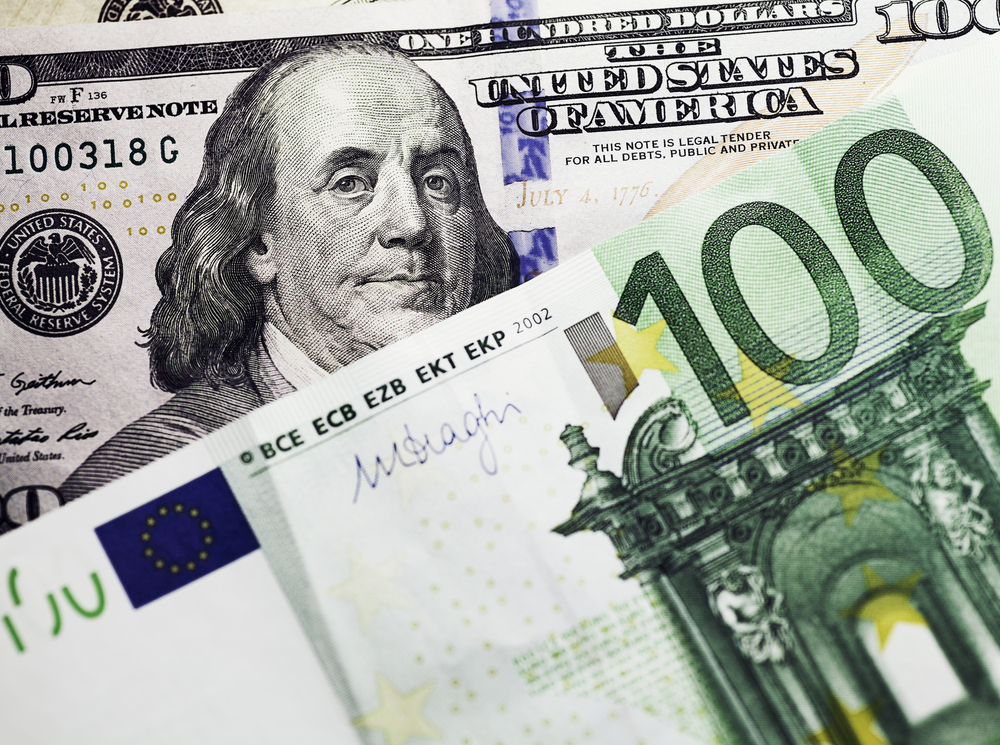

This article is only available to Macro Hive subscribers. Sign-up to receive world-class macro analysis with a daily curated newsletter, podcast, original content from award-winning researchers, cross market strategy, equity insights, trade ideas, crypto flow frameworks, academic paper summaries, explanation and analysis of market-moving events, community investor chat room, and more.
Summary
- Two weeks ago, EUR/USD traded down to the bottom of its YTD range of ~1.0700/1.1100, the lowest level since mid-November.
- Strong US data prints and hawkish Fed messaging drove the USD outperformance.
- Recently, however, buoyant risk sentiment and rallying equities have supported the euro, which is trading like a risk-on/risk-off currency.
- Downside momentum in EUR/USD has therefore faded, and the pair has bounced back to the middle of its larger eight-month range of ~1.0450/1.1250.
Market Implications
- With downside momentum stalled, the recent grind higher in EUR/USD will probably continue unless risk sentiment reverses significantly.
- As the pair approaches the middle of the July-February and YTD ranges, we prefer to stand aside, with a bias to fade the extremes within these ranges.
EUR/USD Cannot Break Out of Its Range …
Since July, EUR/USD has been stuck in a ~1.0450/1.1250 range, trading at the top in mid-July and the bottom in early October.
Chart 1: Orange Line = EUR/USD spot price
… That Range Has Become Tighter YTD
In the first two months of 2024, EUR/USD has traded in a ~1.0700/1.1100 range, topping out at the turn of the year and trading down near 1.0700 on 13 February.
Chart 2: Orange Line = EUR/USD spot price
Why Did EUR/USD Initially Trade Lower This Year?
From the beginning of the year until two weeks ago, the direction of travel in EUR/USD was one way.
After climbing from the 2023 low in October to ~1.1100 at year-end, the pair slid about 3.5% to trade just above 1.0700.
Several stronger-than-expected data points in the US drove the USD outperformance, including inflation and jobs releases from late January and early February.
The prints came with more hawkish messaging from the Fed last month, when Jerome Powell pushed back explicitly against a rate cut in March. Accordingly, the USD rallied against the bulk of its peers (the Dollar Index was up ~2% in January), sending EUR/USD tumbling.
The US economy closed out 2023 on a strong footing, with the second estimate of fourth-quarter GDP coming in at a solid 3.2%. This buoyant growth is expected to continue in Q1, with the most recent Atlanta Fed GDP nowcast printing at 3.2%, up from 2.9% earlier this month.
This is contrasted with the much gloomier growth outlook in the Eurozone.
Germany, so long the engine of the Eurozone economy, has struggled since Russia invaded Ukraine two years ago. It has not grown since the war began, with the economy shrinking 0.3% last year.
In its latest monthly report, the Bundesbank said that the German economy is probably currently in a recession, and the outlook for early 2024 is weak.
Given the contrasting economic backdrops on either side of the Atlantic, it is easy to see why EUR/USD sold off in the first six weeks of this year.
Why has EUR/USD Rallied Off Its YTD Low?
That one-way traffic in January and early February has reversed somewhat the past fortnight, with EUR/USD back above 1.08 and edging back towards the middle of the July-February range.
There are a couple of things to note here.
Chart 3: Orange line = US 2-year Swap Yield
Chart 4: Orange line = Eurozone 2-year Swap Yield
The 2-year US swap yield is up 48bps YTD, while the 2-year Eurozone swap yield is up 45bps. So, despite the US economy looking much brighter, yield differentials in EUR/USD have hardly shifted.
More importantly, however, risk appetite has been exceptionally buoyant this month, supporting EUR/USD. Equity markets have traded sharply higher in recent weeks, with European stocks especially well bid.
This sentiment is important because, as my Macro Hive colleague Bilal Hafeez recently noted, the biggest driver of EUR/USD is risk markets, with the euro acting like a ‘risk-on/risk-off’ currency.
Given the buoyant risk sentiment and rallying equity markets recently, EUR/USD is unsurprisingly trading higher in the latter part of this month.
Patience Required Until We Reach Range Extremes
Looking ahead, we think the recent rally off the February low in EUR/USD probably means that the pair will continue to trade within the ranges outlined above.
Failing a massive turnaround in risk sentiment, the euro will probably continue to grind higher and oscillate near the middle (or edge to the top) of these ranges.
Unless and until the pair trades to the range extremes, our conviction level remains low, and we prefer to remain patient in EUR/USD.
First, despite the US economy being stronger than the Eurozone one, short-end yields in both markets have risen to an almost identical degree.
